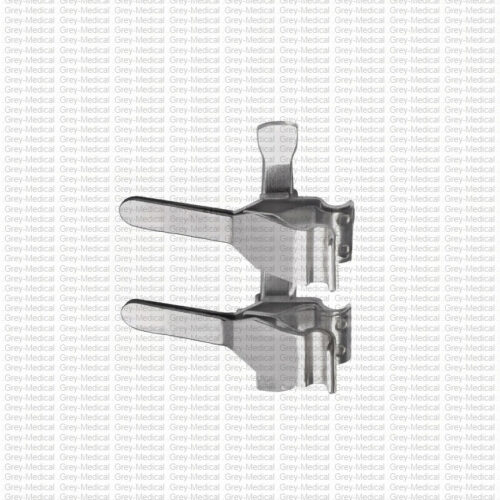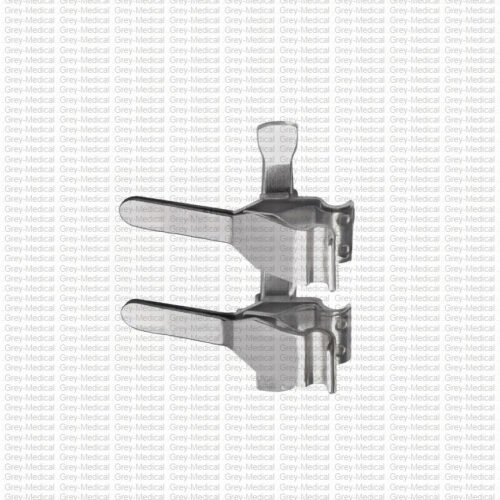Medical surgeries are intricate procedures that demand precision, efficiency, and the use of reliable tools. Among these essential tools, clamp medical surgical instruments play a pivotal role. Their design, functionality, and application have made them indispensable in modern operating rooms worldwide.

Understanding Clamp Medical Surgical Instruments
Clamp medical surgical instruments are specialised tools designed to grasp, secure, or compress objects during surgical procedures. These instruments can be found in various shapes and designs, catering to specific medical tasks. Typically crafted from stainless steel, their durable and sterilised nature ensures they meet the rigorous hygiene and performance standards of the healthcare industry.
The fundamental mechanism of clamps may seem simple, but their importance is unparalleled. They act as extensions of the surgeon’s hands, providing the stability and precision required to manipulate delicate tissues, secure blood vessels, or hold surgical materials in place.
Types of Clamp Instruments and Their Specific Uses
Clamps come in diverse forms to serve distinct purposes in surgical procedures. For instance, vascular clamps are precisely engineered to control blood flow, preventing excessive bleeding during surgeries. Haemostatic clamps, such as Kelly or Mosquito clamps, are frequently used to compress blood vessels or tissues to reduce bleeding.
Similarly, intestinal clamps assist surgeons in securing sections of the intestine during gastrointestinal surgeries. Meanwhile, bulldog clamps are small and spring-loaded, designed to temporarily halt blood flow in delicate surgical areas. Each type of clamp is crafted to meet the unique challenges posed by various surgical scenarios.
How Clamp Instruments Enhance Surgical Precision
Surgical precision is of utmost importance to ensure positive patient outcomes. Clamp medical surgical instruments enhance this precision through their design and functionality. Their ergonomic structure provides surgeons with a secure grip, minimising hand fatigue during lengthy procedures. This stability ensures that movements are exact, reducing the margin for error while working with delicate tissues or blood vessels.
Another key aspect is their range of locking mechanisms, which allow surgeons to exert a consistent level of pressure without the need for constant manual effort. This frees the surgeon to focus on other critical aspects of the procedure. Additionally, the sterilised, lightweight design of clamps ensures they meet both safety and usability requirements in high-pressure environments.
The Evolution of Clamp Instruments in Modern Medicine
The design of clamp surgical instruments has continually evolved in line with advancements in medical technology. Modern clamps boast improved materials, such as titanium, which offers enhanced durability and resistance to corrosion. Innovations in ergonomics have further refined handle design, making it possible for surgeons to maintain control even during prolonged procedures.
Technological advancements are also contributing to the increased versatility of clamps. Laparoscopic surgery, a minimally invasive technique, requires precise tools configured to fit through small incisions. This demand has led to the development of slim, highly efficient clamps tailored for laparoscopic instruments, demonstrating how technological progress continues to shape the landscape of surgical tools.
The Importance of Proper Handling and Maintenance
Proper handling and maintenance of clamp medical surgical instruments are critical to their longevity and effectiveness. Routine sterilisation is necessary to prevent infection and maintain the safety of surgical procedures. Strict storage protocols ensure that the tools remain intact and ready for use. Additionally, regular inspections for wear and tear play a crucial role in extending their lifespan and maintaining optimal functionality.
Healthcare facilities often adhere to stringent quality checks for clamps, ensuring that they remain in pristine condition. By investing in proper care, medical teams can guarantee that these instruments continue to deliver precision and reliability during surgeries.
Final Thoughts
Clamp medical surgical instruments are undoubtedly among the most important tools in modern medicine. Their intricate designs and specialised uses enhance the precision and efficiency of surgical procedures, allowing medical professionals to consistently deliver high-quality care. From controlling blood flow to securing delicate tissues, clamps play an indispensable role in ensuring positive patient outcomes.
The ongoing evolution of these instruments, driven by technological advancements, promises to further elevate surgical standards. By understanding their capabilities and maintaining them with care, the healthcare industry ensures that these tools remain effective, fostering better surgical experiences worldwide.









